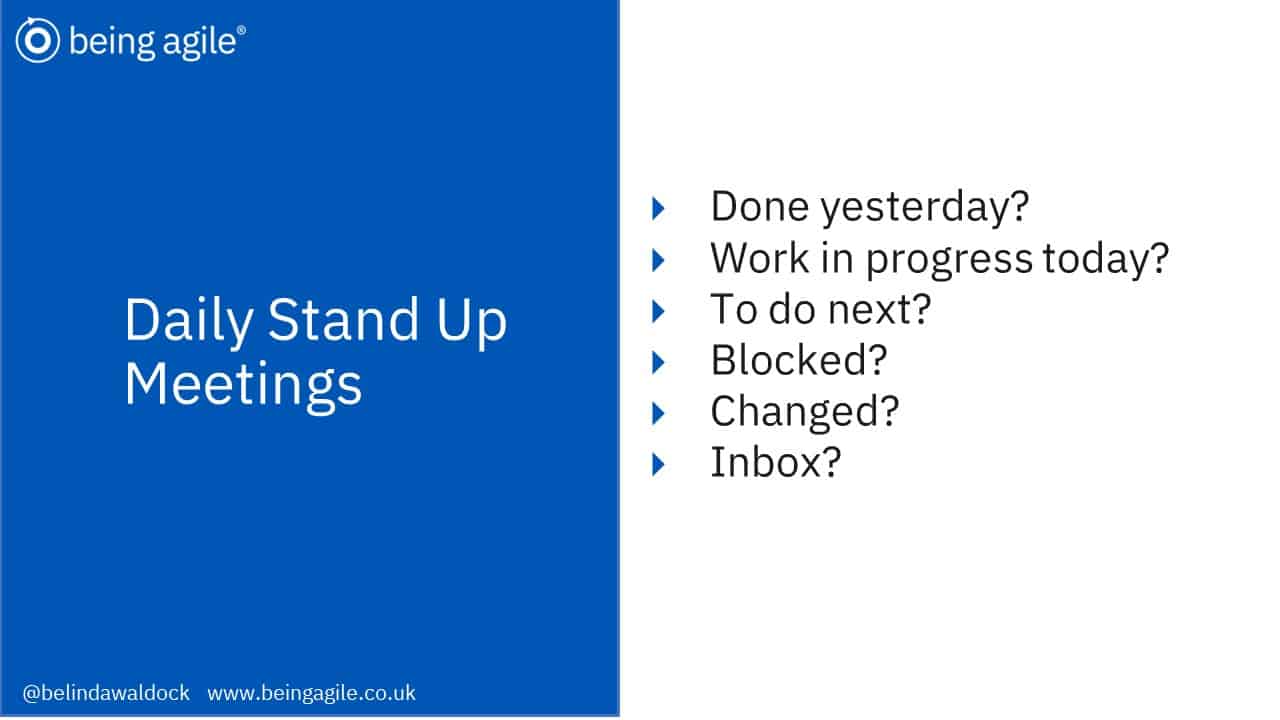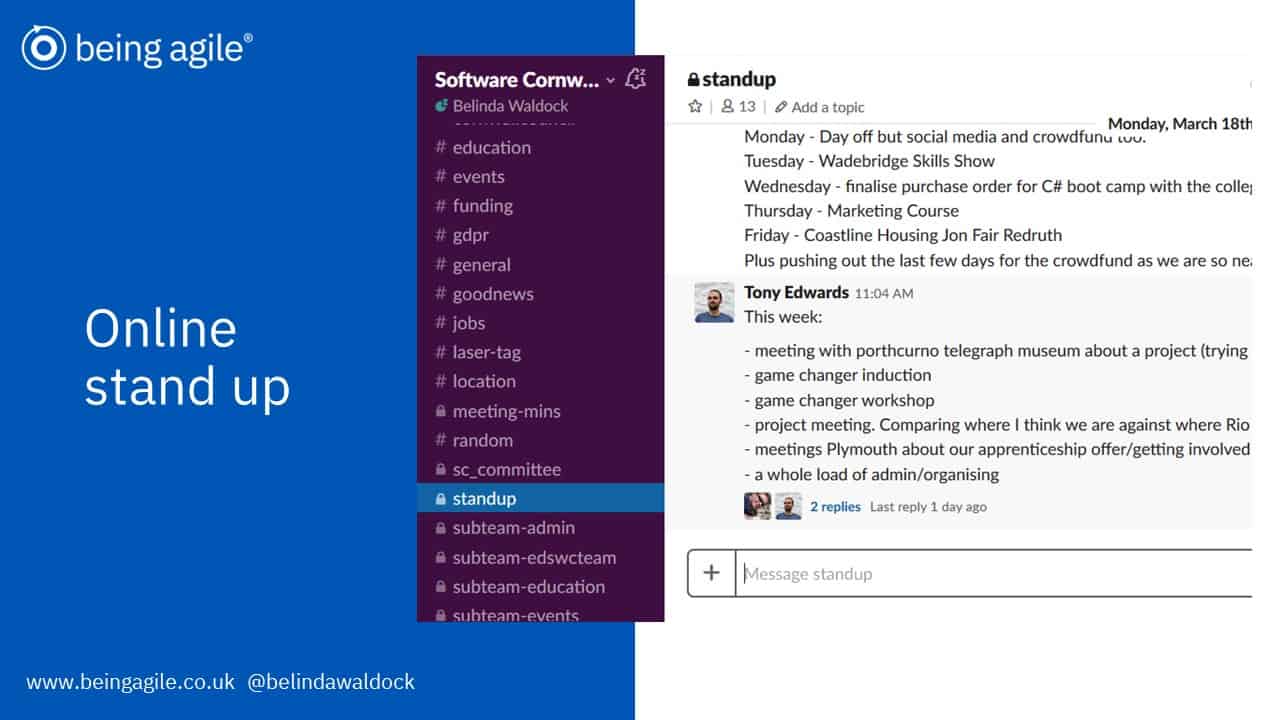Stand up meetings are a really popular style of meeting in agile teams. They originate from when software developers were co-located and literally stood up each day around their project white boards to update them. Moving their cards to show what they had completed, updating what they were working on, and identify what they will do next, how thing are progressing what’s going well, and highlighting any challenges or blocks, resource needs or support required.

The stand up meeting aims to be a regular short (10 mins) check in meeting that helps to keep the team informed of each others activity, opportunities to work together, raise opportunities and challenges quickly. This enables the team to stay up to speed with activity and progress, to ensure the board represents a real-time picture of work in progress.
It’s a good time to quickly review any new inbox items to consider if they should be placed in the backlog or considered to add to the current sprints slack.
A stand up should be brief and high level, if detailed discussion is needed this should be followed up afterwards with the relevant members as a separate discussion.
Stand ups are positioned to be a daily activity in most methods. Its a good starting point. It takes a couple of weeks for the team to get up to speed with these meetings, initially they may be 20 or 30 minutes long as they catch up to real-time. Once the flow is found and the team get used to running the meetings they can become very fast and effective way of staying up to speed.
Stand up meetings might be twice daily, or twice weekly, dependant on how often they need to meet in order to keep a real-time picture of progress and activity. If it is a small project that is only being worked on once a week by the team, then a weekly stand up would likely be enough. Alternatively if it is a large fast moving project, with a team working on it full time then daily sprints would likely be needed to keep up to date.
Stand up meetings were designed to be in person, physically, or virtually. However teams could use a slack or Teams channel to post updates, alongside updating a Trello board. The Minimum Viable Stand Up, should be a commitment to regularly updating the board and the team on progress on an agreed basis.

An example of a weekly check in across a team using a slack channel
At the end of each sprint as part of the retrospective, we can review whether our stand up meeting rate is maintaining a real time picture, and if not increase or decreased as needed.
A great benefit of stand up meetings is they deal with the day to day real time, which means when the team meet for planning or review, the time can be spent on planning or review, rather than distracted catching up with the day to day first.
Stand Up meeting are also know as a Daily Scrum in Scrum, or Team Huddle, has been adopted by teams I have worked with. Stand up is quite a directive and abrupt name, Huddle is perhaps more friendly. The idea of Standing up also is said to help keep meetings short!
This is a great comedy video by Atlassian about Stand up meetings
What is agile — The Being Agile Mix
Digital Agile Boards — Agile Trello Board
Agile Planning – Prioritisation – Moscow & Urgent/Important
Agile Methods – T-Shirt Estimation – Estimating Size
Agile Planning – Considering complexity
Book a 30 minute conversation to chat more about being agile in your world!